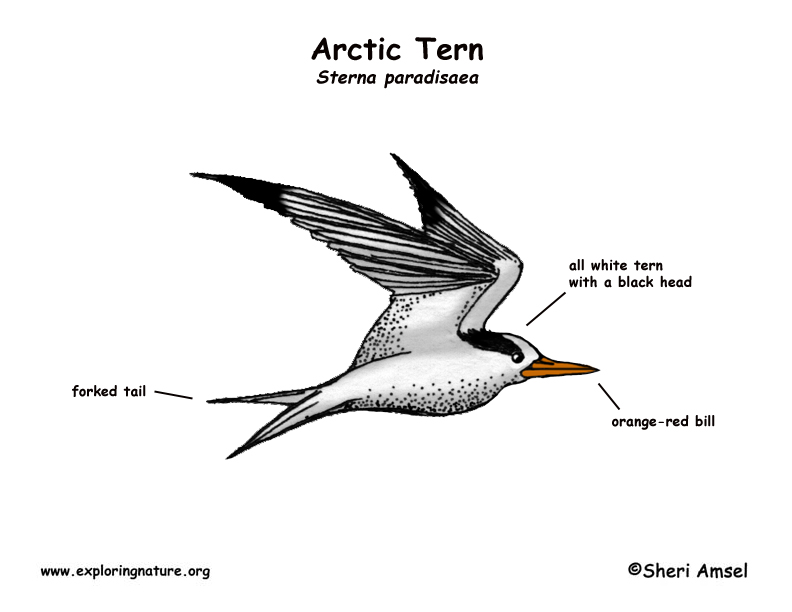

They breed in summer all over the Arctic in northern Eurasia, Iceland, Greenland, Alaska and northern Canada, southward to northern British Columbia and sometimes the eastern U.S. south to Massachusetts. This is called circumpolar. They winter on the pack ice off the coasts of Antarctica.
They breed on the tundra, on rocky islands and beaches.
They are white with a black head and an orange-red bill. They are a small bird with short legs. They only reach about a foot and a half long and weigh about 2 pounds. When flying, you can see black markings under their wings. They have a forked tail.
They live in big groups (colonies) of 50 or more that sometimes have gulls and other terns in them. They can hover in midair like a hummingbird. They travel the furthest of any bird in the world every year, covering 22,000 miles (migration). They spend most of their lives in the air.
They eat fish, insects, shrimp, and other small sea creatures.
Females dig a nest on the rocky ground or grass, hidden in the taller grass or sometimes right out in the open. Females lay 1-3 greenish eggs with dark spots.
Kingdom: Animalia
Phylum: Chordata
Subphylum: Vertebrata
Class: Aves
Order: Charadriiformes
Family: Laridae/Subfamily: Sterninae
Genus: Sterna
Species: S. paradisaea
When you research information you must cite the reference. Citing for websites is different from citing from books, magazines and periodicals. The style of citing shown here is from the MLA Style Citations (Modern Language Association).
When citing a WEBSITE the general format is as follows.
Author Last Name, First Name(s). "Title: Subtitle of Part of Web Page, if appropriate." Title: Subtitle: Section of Page if appropriate. Sponsoring/Publishing Agency, If Given. Additional significant descriptive information. Date of Electronic Publication or other Date, such as Last Updated. Day Month Year of access < URL >.
Amsel, Sheri. "Tern (Arctic)" Exploring Nature Educational Resource ©2005-2024. December 14, 2024
< http://www.exploringnature.org/db/view/Tern-Arctic >

